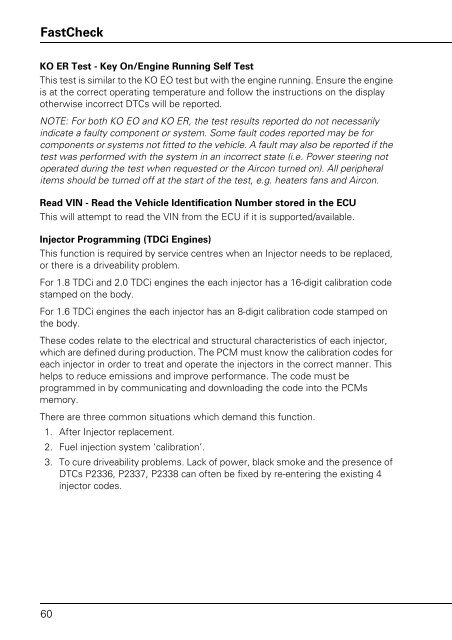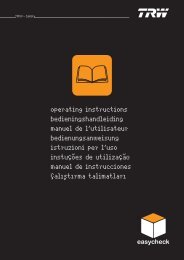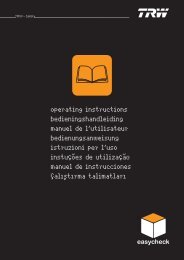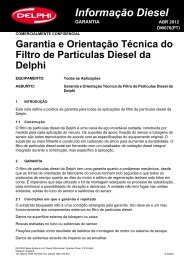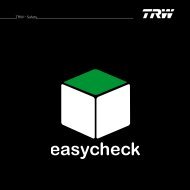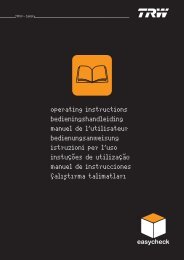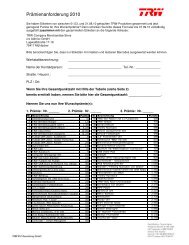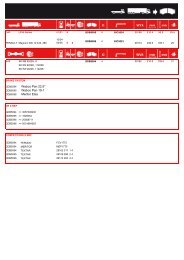Operating instructions - TRW Automotive Aftermarket
Operating instructions - TRW Automotive Aftermarket
Operating instructions - TRW Automotive Aftermarket
You also want an ePaper? Increase the reach of your titles
YUMPU automatically turns print PDFs into web optimized ePapers that Google loves.
FastCheck<br />
KO ER Test - Key On/Engine Running Self Test<br />
This test is similar to the KO EO test but with the engine running. Ensure the engine<br />
is at the correct operating temperature and follow the <strong>instructions</strong> on the display<br />
otherwise incorrect DTCs will be reported.<br />
NOTE: For both KO EO and KO ER, the test results reported do not necessarily<br />
indicate a faulty component or system. Some fault codes reported may be for<br />
components or systems not fitted to the vehicle. A fault may also be reported if the<br />
test was performed with the system in an incorrect state (i.e. Power steering not<br />
operated during the test when requested or the Aircon turned on). All peripheral<br />
items should be turned off at the start of the test, e.g. heaters fans and Aircon.<br />
Read VIN - Read the Vehicle Identification Number stored in the ECU<br />
This will attempt to read the VIN from the ECU if it is supported/available.<br />
Injector Programming (TDCi Engines)<br />
This function is required by service centres when an Injector needs to be replaced,<br />
or there is a driveability problem.<br />
For 1.8 TDCi and 2.0 TDCi engines the each injector has a 16-digit calibration code<br />
stamped on the body.<br />
For 1.6 TDCi engines the each injector has an 8-digit calibration code stamped on<br />
the body.<br />
These codes relate to the electrical and structural characteristics of each injector,<br />
which are defined during production. The PCM must know the calibration codes for<br />
each injector in order to treat and operate the injectors in the correct manner. This<br />
helps to reduce emissions and improve performance. The code must be<br />
programmed in by communicating and downloading the code into the PCMs<br />
memory.<br />
There are three common situations which demand this function.<br />
1. After Injector replacement.<br />
2. Fuel injection system ‘calibration’.<br />
3. To cure driveability problems. Lack of power, black smoke and the presence of<br />
DTCs P2336, P2337, P2338 can often be fixed by re-entering the existing 4<br />
injector codes.<br />
60


